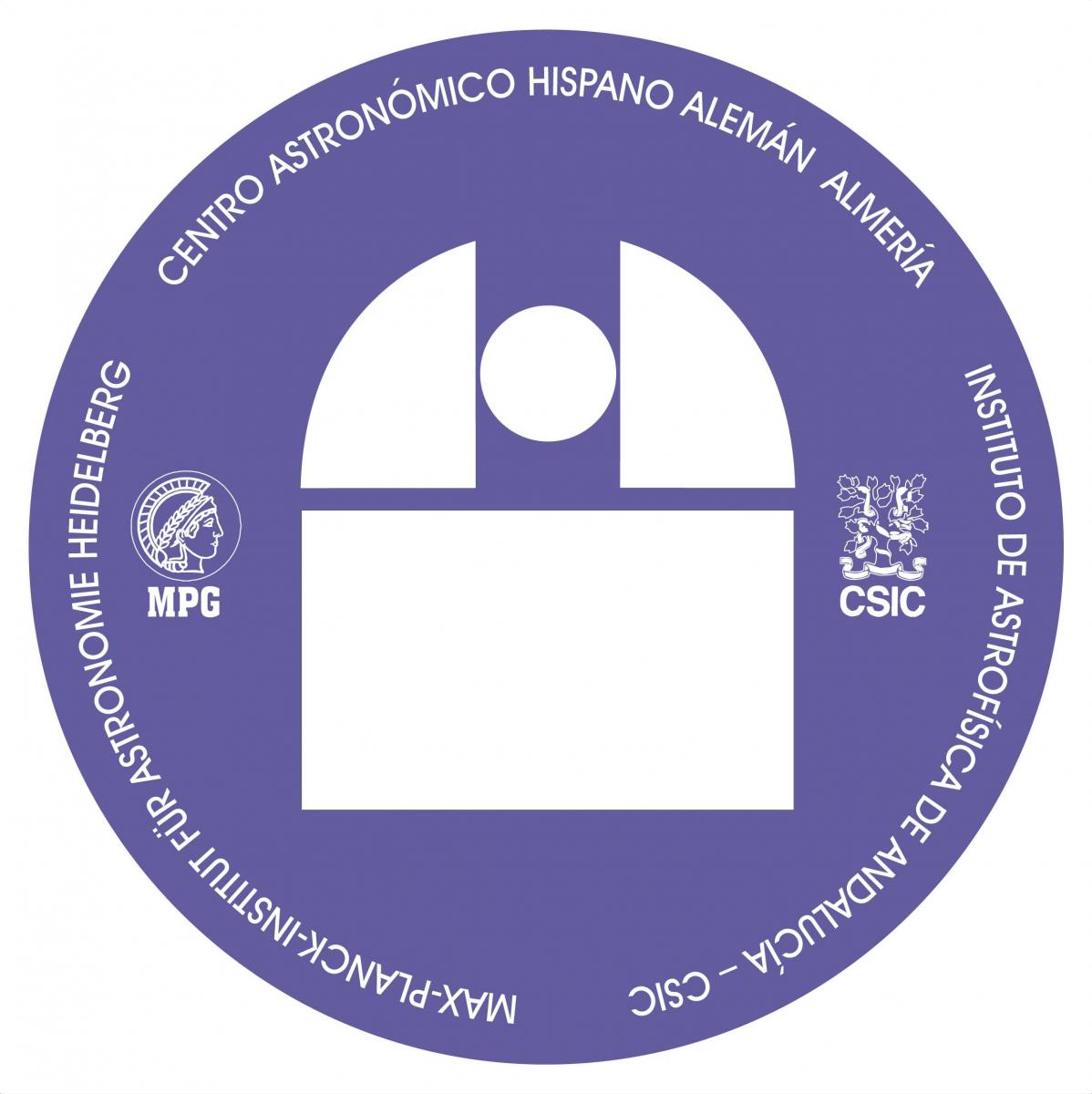This webpage from iaa.csic.es is no more maintained and kept for historical purpose only. Please click HERE to browse the new PANIC webpages at caha.es for the camera updated with a new 4K sensor
Overview
PANIC is a general purpose Panoramic Near Infrared camera for Calar Alto observatory (CAHA). It is optimized for use at the 2.2m telescope, but can also be installed at the 3.5m telescope.
Important features:
-
Panoramic field of view of 30x30 arcmin

-
Footprint ideally suited for single large objects
The detector is an array of four Hawaii-2RG detectors. The inter-chip gap between the detectors is only 167 pixels (or 75 arcsec at the 2.2m telescope) and is filled by dithering with sufficient amplitude. For applications which image only 30x30 arcmin this design is ideal.
For full details about the detectors performance and characterization, see this document.
Filters
- PANIC is equipped with standard broad band filters Z,Y,J,H,Ks and H2, Br-gamma narrow band filters.
- The optical design is such that narrow band filters (i.e. filters for which bandwidth = 1% of central wavelength) can be used without major degradation of band pass.
- PANIC can accomodate up to 19 filters
- for more info go to the Filters section.
Cold field and pupil stops
Panic has cold field and pupil stops in order to reduce thermal background.
Fast read-out mode
The HAWAII-2RG detector can be operated with a pixel clock of 100 kHz or 1 MHz.
Furthermore, on fast read-out mode, subwindows frames can be read a higher frame rate, for example:
-> Subwindow of 15''x15'' (34x34px at 2.2m telescope)
34 x 34 x 10µs = 11,56 ms @ 100kHz
34 x 34 x 1µs = 1,156 ms @ 1MHz
And if we spread the window area on two outputs channels, the readout will speed up twice since two AD converters operate in parallel:
17 x 34 x 10µs = 5,78 ms @ 100kHz
17 x 34 x 1µs = 0,578 ms @ 1MHz
Pipelines for quick-look and science data reduction
PANIC has a pipeline software package (PAPI) with can be run in two modes: one quick which supply the observer with reduced quick-look (PQL) data to judge and optimize the observations, and a science pipeline mode which reduces the data after end of observations with all available calibrations and science data.
PANIC in a nutshell
| 2.2m Telescope | 3.5m Telescope | |
|---|---|---|
| FOV | 31.65 x 31.65 arcmin | 15.9 x 15.9 arcmin |
| Pixel scale | 0.446 arcsec | 0.224 arcsec |
| Detector | 4x4k mosaic of 4 HAWAII-2RG (2x2kx2k) | 4x4k mosaic of 4 HAWAII-2RG (2x2kx2k) |
| Wavelength range | Z-K | Z-K |
| Standard broad band filters | Z, Y, J, H, Ks | Z, Y, J, H, Ks |
| Narrow band filters | H2, Br-gamma | H2, Br-gamma |
| Intrinsic image quality DEE80 | < 2 px | < 2 px |
| Image distortion | < 1.3 % | < 1.3 % |
Limiting magnitudes
The following limiting magnitudes are expected (to be finally replaced with real ones) for seeing = 1 arcsec, 1 hour integration time, 3 sigma detection, point sources:
| Filter | Limiting magnitud |
|---|---|
| Z | TBD |
| Y | TBD |
| J | 23 |
| H | 21 |
| Ks | 21 |
Data production rate, handling and storage
- The data production rate is typically 10-50 Gbyte/night.
- The data are stored on a 4 Tbyte local disk and automatically archived by CAHA.
- The observer can store her/his data on hard disk via USB in multi extension FITS format (MEF).
Status & Schedule
- September 2018, HAWAII-4RG ordered
- June 2018, Detector upgrade: The four HAWAII-2RG mosaic of PANIC will be replaced by a new HAWAII-4RG detector
- 1st Semester 2016: available for astronomical community
- Science Verification during 2015
- Commissioning at 2.2m and 3.5m telescopes of CAHA.
- 6th November 2014: First light at 2.2m !






